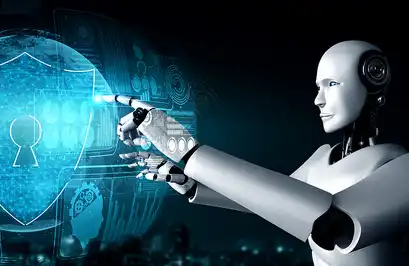BTC Derivative Protocol: Who is the most potential alpha?
Source: blockpunk, SevenUp DAO
This article will introduce the advantages of protocols such as #RGB, #Lightning, #TaprootAssets, #BitVM, #Atomicals, #Ordinals, #RSK, #STX from the perspectives of legitimacy and potential.
While the BTC ETF speculation is skyrocketing, the ecosystem of BTC derivative protocols is also rapidly developing.
An agreement, only with both the passion for speculation and the legitimacy within the community, has the potential to become a truly promising alpha.
In the world of encryption, funds are never scarce, and the real competition is the competition for legitimacy. This is crucial for those seeking alpha.
And the BTC community is an extremely conservative and decentralized community. In the eyes of BTC wizards, whoever is more authentic and in line with the community culture, this protocol is more likely to succeed, after all, the buying power and appeal of BTC OG is amazing.
Therefore, we start with the solutions of the aforementioned protocols to understand the legitimacy and advantages of different protocols.
First of all, remember the teachings of BTC wizards:
- Cannot modify or upgrade the BTC network itself, as this would make the system more complex and affect the security of all BTC.
- Cannot expand the BTC block size, which leads to BTC becoming more centralized.
- not your keys not your coins,自己的 BTC 自己持有,不能交给第三方机构。
Translation:- not your keys not your coins, hold your own BTC and do not entrust it to third-party institutions.
Before understanding these protocols, let's first answer a question: why was the BTC ecosystem suddenly discovered for its value?
Here we need to talk about two important technical updates: first is the 2017 Segregated Witness upgrade, which expanded BTC's block data from 1 MB to 4 MB, but the expanded part can only be used to store signatures. Until the Taproot upgrade at the end of 2021, advanced scripts could be written for the first time in Segregated Witness, and complex data can be written on BTC.
BTC has made significant progress in programmability and scalability, and some protocols containing complex logic are beginning to emerge. The BTC ecosystem has finally reached a milestone in the next stage, which is the main opportunity for the ecological explosion in 2023.
Ordinals & BRC20
The Ordinals protocol has completely ignited the BTC ecosystem, and its rapid development is also mutually promoted by the adoption of Taproot. People can encode the data of NFT and write it into the space of segregated witness extension (4 MB per block).
The image of NFT itself is also permanently engraved in the BTC block, which is more decentralized than ETH NFT and does not rely on any third party to view and transfer (essentially UTXO) this NFT.
The implementation of Ordinals uses the most basic functionality of BTC, and the transfer of NFTs is also completely processed by the BTC network, which is in line with the original concept of the BTC community. This quickly ignited the enthusiasm of the community and was quickly adopted. However, due to the limitations of its artwork, its development potential is also very limited.
Soon, new developers improved Ordinals by mimicking ERC20 and writing the full functionality of Tokens into BTC output scripts, giving birth to BRC20.
However, the output script of BRC20 only stores data and cannot actually perform the functions of tokens such as transfer and minting. Therefore, we must rely on third-party sorters to record the ledger under the BTC chain and engrave new state data into the script.
Therefore, the third-party sorter has become a weak point of the system. BRC20 transfers are not executed on the BTC main chain and must be split into two steps of BTC transactions (i.e. first collected in the sorter and then transferred), which adds additional complexity and generates a large number of junk transactions.
Therefore, it is not widely accepted by the entire BTC community like Ordinals and has been controversial since its inception. However, due to the token's widespread applicability and better liquidity, it is highly sought after by speculators.
Due to its lack of orthodoxy and support from the BTC core community, there have been no significant innovations or gameplay in the BRC20 and its improved protocols.
In order to continue to gain legitimacy, some developers have started developing decentralized sorters such as #Trac. This seems like a good direction, but I believe it is still limited by the overall framework and difficult to break through.
Atomical & ARC20
@atomicalsxyz is another derivative protocol that implements tokens by engraving data on UTXO.
Different from Ordinals, which was originally designed for NFTs, it rethinks how to issue tokens in a centralized, immutable, and fair manner on BTC from the ground up.
Atomicals uses the smallest unit of Bitcoin, sat, as the basic "atom". Each UTXO of one sat represents the token itself, where 1 token equals 1 sat.
When verifying an Atomicals transaction, you only need to query the corresponding sat UTXO on the BTC chain. The atomicity of ARC20 Token is consistent with that of BTC itself, and the calculation of ARC20 transfer is completely processed by the BTC underlying network.
Therefore, compared to BRC20, the demand for a third-party sorter for transaction pairs in ARC20 has greatly decreased, greatly improving the decentralization of the entire system. This is more in line with the culture of the BTC community.
UTXO can be combined in BTC transactions, which makes ARC20 tokens more programmable. For example, since BTC is essentially composed of UTXOs, theoretically, swapping BTC with ARC20 only requires exchanging the inputs and outputs of UTXOs.
Another key improvement of Atomicals is the purchase of POW during the casting process of ARC20. Casters must use CPU enumeration to calculate the hash value that matches a specific prefix character before they can participate in the "newly issued" process. This is a more decentralized and fair distribution method.
Rune & Pipe
Taproot Assets (Taro)
RGB
RGB converts the state of a smart contract into a concise proof, which is then engraved into the output script of a BTC UTXO.
Users can verify this UTXO to check the status of the smart contract. When the smart contract state is updated, a new UTXO is created to store the proof of state change.
All data related to smart contracts are completely stored on the BTC chain and are operated by dedicated RGB nodes. The RGB nodes themselves record the complete data of the smart contract and process the computational workload of transactions. Users can verify the determinism of contract state changes by scanning the entire UTXO of the BTC chain.
Each smart contract in RGB has its own separate state history and data. In other words, RGB itself does not have the concept of a chain, and the states of different smart contracts do not intersect, which is different from the shared state of smart contracts in ETH.
To interact with multiple RGB contracts, it is necessary to use the Lightning Network, for example, the swap function of multiple RGB tokens.
You can think of RGB as BTC's L2. The advantage of this design is that it utilizes BTC's security to guarantee smart contracts. However, as the number of smart contracts increases, the demand for UTXO encapsulated data will also increase, ultimately inevitably causing a lot of redundancy in the BTC blockchain.
Since 2018, RGB has remained in the development stage and there is no content available for speculation. Tether's issuer, Tether Limited, is an important promoter of RGB and they have been saying that they will reissue USDT in large quantities on the BTC RGB platform.
Although RGB relies on third-party nodes to run smart contracts, the UTXO records for each state update make it the most secure and BTC-native smart contract implementation method currently available, and its legitimacy remains strong.
RSK & RIF
RSK can be seen as the L2 of BTC, essentially an EVM-based smart contract chain.
RSK has not written anything into the BTC network, so its operation and security do not depend on the BTC network.
RSK simply uses hash locks to cross-chain mainnet BTC onto its own chain as network gas.
At the same time, RSK uses the same POW consensus algorithm as BTC, so BTC miners can also mine on RSK and earn transaction fees in $RBTC.
It can be seen that the relationship between RSK and BTC is almost negligible, and their ecological connection is also very rare. The business relationship between $RIF and RSK itself is not significant, and its rise fully demonstrates the speculative enthusiasm of the BTC ecosystem and the scarcity of tradable assets.
Stacks & SBTC & STX
Stacks can be seen as a smart contract sidechain for BTC.
Unlike RSK, Stacks has its own block reward system, where gas and block rewards are both denominated in $STX.
Stacks will produce multiple "micro-blocks" during the 10-minute gap between BTC blocks. When BTC blocks are produced, the hashes of these blocks will be written into the script of BTC transactions all at once.
At the same time, miners need to become nodes of Stacks and qualify by staking BTC on the mainnet. Rewards are sent to miners in $STX, while the staked BTC is allocated to $STX stakers. This is equivalent to burning BTC in exchange for $STX tokens, which is enough to make BTC maximalists not just reject it, but even "furious".
Although there are doubts about its orthodoxy, it must be said that $STX has done a very good job in stepping on the narrative and has the best liquidity, and its rise is also very impressive.
Meanwhile, Stacks has recently launched the SBTC network, which is actually generated on the Stacks chain at a 1:1 ratio with BTC locked on the mainnet through threshold signatures of $STX stakers, and is used for DeFi purposes.
By introducing BTC assets through threshold signatures, there is no need for a third-party bridge. Compared to the previous method of using hash locks through a third party ("not your keys not your coins"), this method is more decentralized and trustworthy.
SBTC's launch and the upgrade of the Stacks chain, although its legitimacy is not high, these plans seem to be guiding $STX towards a benign speculation.
Rollkit by Celestia
$TIA will go live tonight. @CelestiaOrg, as a promoter of modular blockchain, has also issued a Rollup based on the BTC network called Rollkit, which also writes L2 data into the data under Taproot.
BitVM
BitVM is currently the most BTC-native, most promising, and technically hardcore smart contract extension solution.
Without the need to modify the BTC network, a VM virtual machine that supports general computation can be run through optimistic rollups to implement smart contracts for BTC.
BTC network has been used for fraud proofs in running optimistic rollups.
By combining the logical gates of BTC, a circuit that can perform calculations is formed, and through this circuit, fraud proofs can be processed on the BTC chain.
And the execution of smart contracts is carried out on the layer below the BTC chain, with only fraud proofs for optimistic rollups being executed on BTC.
If there are issues with optimistic rollups, validators can initiate fraud challenges on the BTC network and directly confiscate funds through BTC transfers. This ensures the overall security of the rollup and is "verifiable" on the BTC mainnet.
Starting from logic gates to create circuits, it can be seen that this implementation method is very hardcore. It has a beauty similar to handcrafting a computer using redstone circuits in the game "Minecraft".
It perfectly hits the psychology of die-hard BTC developers and community, and can be said to be the king of legitimacy in the BTC smart contract field.
Lightning > RGB > BitVM > Atomicals > Rune > TaprootAssets > BRC20 > RSK > Stacks
Welcome to join the official BlockBeats community:
Telegram Subscription Group: https://t.me/theblockbeats
Telegram Discussion Group: https://t.me/BlockBeats_App
Official Twitter Account: https://twitter.com/BlockBeatsAsia


 Forum
Forum Finance
Finance
 Specials
Specials
 On-chain Eco
On-chain Eco
 Entry
Entry
 Podcasts
Podcasts
 Activities
Activities
 OPRR
OPRR







